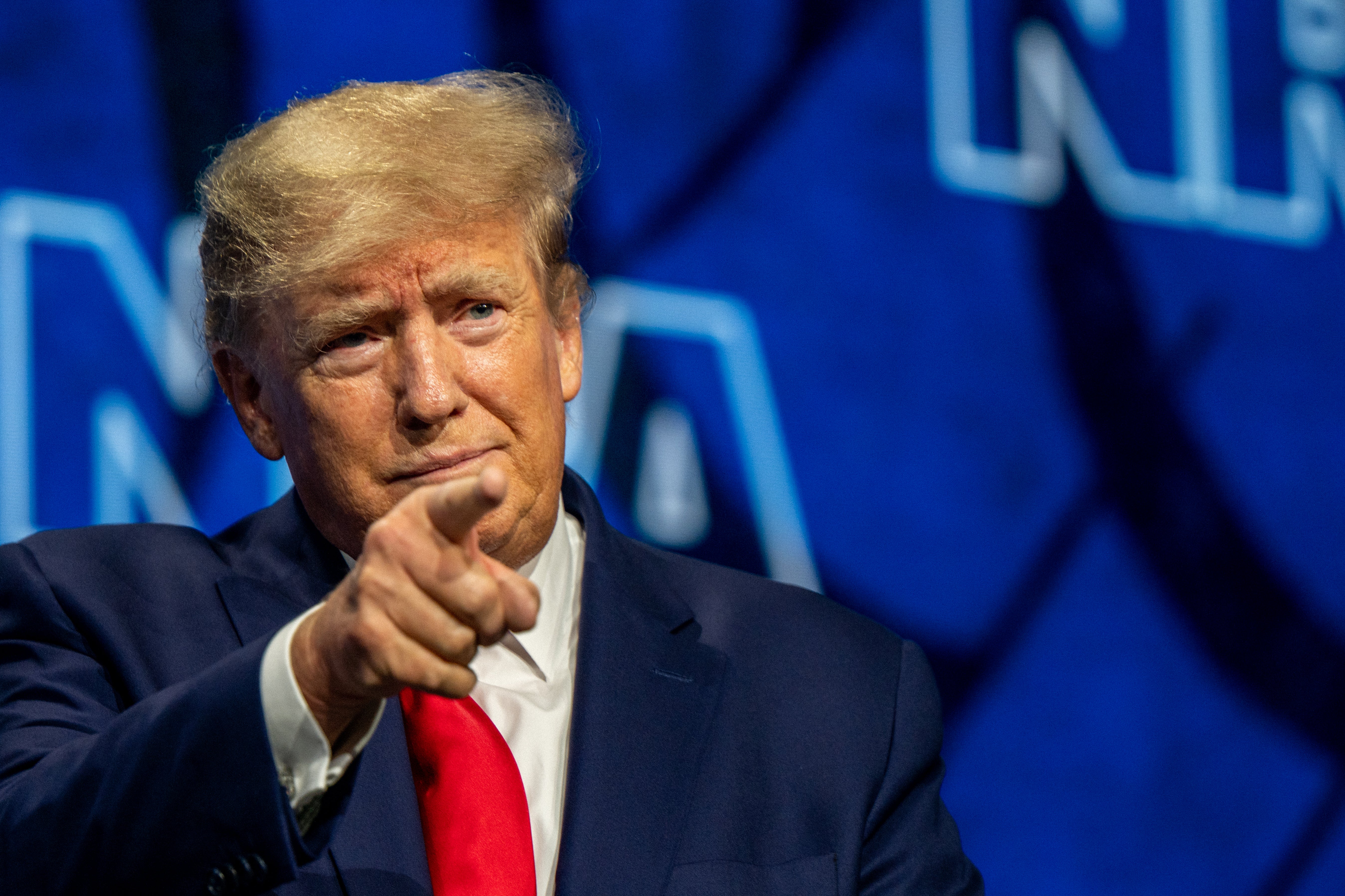Why Donald Trump seeks to court gun-owning voters
The former president’s appearance at the National Rifle Association (NRA) convention sparked plenty of consternation – but that will matter little to him, writes Chris Stevenson


A “showcase over 14 acres of the latest guns and gear” is how the National Rifle Association (NRA) described its annual convention, which ends on Sunday. The gathering in Houston has been a magnet for protest and consternation, with the NRA ignoring calls for the event to be postponed in the wake of the tragic school shooting in Uvalde – about 300 miles (a four-hour drive) away.
That wasn’t a problem for Donald Trump, who spoke at the event on Friday and trotted out the same lines as he has during several other appearances. “We know that the only way to stop a bad guy with a gun is a good guy with a gun,” he said at the 2019 NRA conference in Indianapolis – having suggested at points during his presidency that his administration would be looking into expanded background checks, without this idea ever going anywhere. On Friday, Trump said: “As the age-old saying goes: the only way to stop a bad guy with a gun is a good guy with a gun... Have you ever heard that?”
Trump wasn’t the only Republican to speak over the weekend. Texas senator Ted Cruz did, too, although a number of others scaled back their involvement or cancelled. But what did Trump have to gain from the appearance? The simple answer is a national stage, and the accompanying media coverage. But the longer answer ties into the issue of gun ownership and votes.
The NRA is not the political force it once was, but it still has some clout. It is said to have spent around $29m (£23m) on support for candidates and other activities related to the 2020 elections, down from more than $54m (£43m) in 2016. That number could fall again in the current political cycle. NRA membership is believed to sit at around 5 million, although there may have been some decline in recent years, according to internal documents obtained by The Reload, a publication covering the firearms industry. That is still plenty of potential voters.
Then there is the “gun gap” between voters in presidential elections. University of Kansas political scientists Mark Joslyn, Don Haider-Markel, Michael Baggs, and Andrew Bilbo put out an academic paper that highlighted the significant increase between 1972 and 2012 in the correlation between owning a gun and presidential vote choice. In 1972, about 66 per cent of gun owners voted for Richard Nixon, compared with 55 per cent of those who didn’t own a gun: a 10-percentage-point gap. By 2012, when Mitt Romney ran as the Republican nominee, 56 per cent of gun owners voted for Romney, compared with 26 per cent of non-gun-owners – a gap of 30 percentage points. Trump’s “gun gap” in 2016 was 24 percentage points: 62 per cent to 38 per cent.
If Trump does decide to make a third run for the presidency, he clearly has an incentive to keep such voters, and the NRA, in mind.
Join our commenting forum
Join thought-provoking conversations, follow other Independent readers and see their replies
Comments